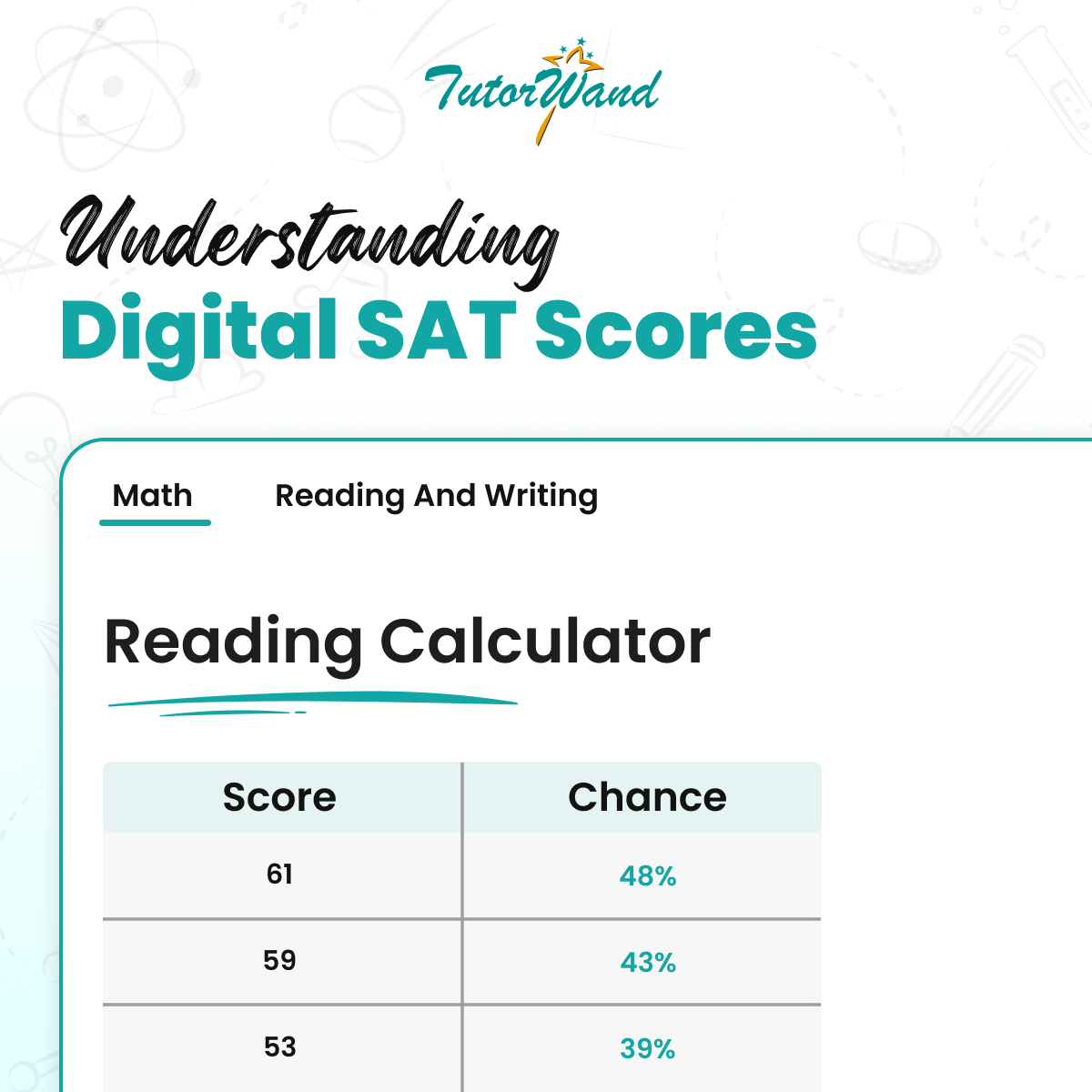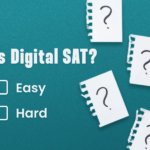The Scholastic Aptitude Test (SAT) is a standardized exam used by colleges and universities to assess applicants’ readiness for college-level work. In 2024, the SAT will transition from a paper-based test to a digital, computer-based exam known as the digital SAT. This shift brings some changes to the test format, administration, and scoring.
As you prepare for the digital SAT, it’s crucial to understand how your scores will be calculated and reported. This guide provides an in-depth look at digital SAT scores – from the scoring process and scale to score reports and what your results mean for college admissions.
10 Key Takeaways
- The digital SAT has two main sections: Reading/Writing and Math.
- Scores range from 200-800 for each section, with a total score between 400-1600.
- Raw scores (number correct) are converted to scaled scores through equating.
- Adaptive testing and section time limits are key changes with the digital format.
- Score scales and ranges allow you to assess your performance and percentiles.
- Equating accounts for differences in test difficulty across various forms.
- Score reports provide detailed breakdowns of your skills and areas to improve.
- Sending scores to colleges is important for applications; research requirements.
- A “good” SAT score depends on your goals but 1200+ is generally strong.
- Your SAT score is one part of your application; other factors matter too.
- 10 Key Takeaways
- How Digital SAT Scores Are Calculated
- Reading and Writing Section
- Math Section
- Scoring
- Key Differences in Digital SAT Scoring
- Understanding the Digital SAT Score Scale
- How Digital SAT Scores Are Calculated
- Key Differences Between Raw and Scaled Scores
- Converting Raw Scores to Scaled Scores
- Score Ranges for the Digital SAT
- What Makes a Good SAT Score?
- Accessing and Understanding Your Digital SAT Score Report
- Your Digital SAT Score and College Admissions
- Preparing for Success on the Digital SAT
How Digital SAT Scores Are Calculated
The digital SAT, like the current paper-based test, will have two main sections:
- Reading and Writing
- Math
Within each section, there are two modules with an equal number of questions and timing.
Reading and Writing Section
The Reading and Writing section assesses your:
- Reading comprehension
- Command of evidence
- Knowledge of words in context
- Expression of ideas
- Standard English conventions
It consists of passages to read and interpret along with grammar, vocabulary, and language usage questions.
Math Section
The Math section evaluates your:
- Mathematical reasoning
- Problem-solving
- Data analysis skills
It includes multiple choice and student-produced response questions covering areas like algebra, advanced math, and additional topics.
Scoring
Your raw score is simply the number of questions you answer correctly in each section. There is no penalty for incorrect or omitted answers.
These raw scores are then converted to scaled scores ranging from 200-800 for each section. The scaled scores account for differences in difficulty across various exam forms through a statistical process called equating.
Finally, your total SAT score combines your scaled scores from the two sections. It ranges from 400-1600.
Key Differences in Digital SAT Scoring
While the basic scoring approach remains consistent, the digital SAT introduces some enhancements:
- Section time limits – Each section now has a specified time, allowing you to focus on one section at a time.
- Adaptive testing – The difficulty level adapts based on your performance. Answering harder questions correctly can raise your score.
- No essay – The optional SAT essay has been removed entirely.
- Combined sections – Reading and Writing are now one combined score rather than two separate scores.
Understanding the Digital SAT Score Scale
The digital SAT score scale allows you to assess your performance based on scaled scores for each section and your total score:
- Section scores range from 200-800
- The total score combines the two section scores and ranges from 400-1600
This table provides an overview of the main score ranges:
Understanding the score scale helps you determine how your performance compares to other test takers nationwide.
How Digital SAT Scores Are Calculated
Now let’s break down the specific scoring process for each digital SAT section:
1. Reading and Writing
- You receive a raw score based on the number of questions answered correctly.
- The raw score is converted to a scaled score from 200-800 through equating.
- Your scaled score reflects your skills in areas like reading, analysis, grammar, and writing.
2. Math
- You receive a raw score based on correct answers.
- This raw score is converted to a scaled score from 200-800 through equating.
- Your scaled score reflects your mathematical reasoning and quantitative skills.
3. Total Score
- Your section scaled scores are combined to determine your total SAT score.
- The maximum total score is 1600, averaging the two section scores.
Key Differences Between Raw and Scaled Scores
It’s helpful to understand the distinction between raw scores and scaled scores:
- Raw scores are the simple number of correct answers per section.
- Scaled scores account for test form difficulty through equating and range from 200-800.
- Raw scores are never directly reported. Only scaled scores and total scores are provided.
- Scaled scores enable fair comparisons across different test administrations.
Converting Raw Scores to Scaled Scores
After taking the digital SAT, your raw scores must be converted to scaled scores. This is done through equating, using statistical techniques and test data to account for differences in test form difficulty.
The College Board releases official score conversion tables to show the mapping of raw scores to scaled scores for each section. Referring to these tables allows you to gauge your scaled scores based on your raw scores.
Minor variations in scaled scores may occur between forms due to slight differences in question difficulty. But equating ensures an equal level of performance results in the same scaled score on any version of the test.
Score Ranges for the Digital SAT
Understanding the score ranges for the digital SAT helps you interpret your results:
Section Scores
- Each section (Reading/Writing, Math) receives a scaled score between 200-800.
- A maximum section score of 800 reflects a perfect performance.
Total Score
- Your total score combines the section scores, ranging from 400-1600.
- The maximum total score is 1600, averaging 800 on each section.
What Makes a Good SAT Score?
A “good” SAT score depends on your individual goals and the colleges you plan to apply to. However, here are some general SAT score benchmarks:
- The current average SAT score is around 1050-1060.
- A score above 1200 is generally considered quite strong.
- Top tier colleges often look for scores of 1400 or higher.
- A perfect SAT score is 1600, with 800 on each section.
Always check the score ranges and averages for your target schools to determine your target scores. The digital SAT scales will align similarly to the current paper-based test.
Accessing and Understanding Your Digital SAT Score Report
Once you complete the digital SAT, you’ll be eager to get your scores! Here’s what you need to know:
Viewing Your Scores
- Scores are released online through your College Board account, typically in 2-3 weeks.
- Your report will include section scores, test scores, percentiles, and more.
Sending Scores to Colleges
- You can send scores to colleges directly through College Board for free initially.
- Research each college’s requirements and deadlines for score reporting.
Analyzing Your Performance
- Review your strengths and weaknesses using the test interpretation tools.
- Compare your percentiles to understand how you did relative to others.
- Identify areas to focus on improving if you plan to retake the test.
Your Digital SAT Score and College Admissions
While your digital SAT score is important for college applications, it’s not the only factor admissions officers consider. Contextual factors like your:
- High school grades and course rigor
- Extracurricular activities
- Personal essay and letters of recommendation
- Interview skills (if required)
also play a significant role. Aim for SAT scores aligned with your target schools, but remember that your digital SAT score is just one piece of your application profile.
Preparing for Success on the Digital SAT
To achieve your best possible score on the digital SAT:
- Take full-length practice tests to get comfortable with the format and timing.
- Use TutorWand and get 10+ Full Length Mock Test at 70% OFF with Coupon Code – SATOCTOBER
- Focus on your weak areas by using the detailed score reports to tailor your study plan.
- Practice questions that adjust difficulty based on your performance.
- Simulate test day conditions with a digital practice test experience.
With proper preparation, you can feel confident tackling the digital SAT and earning scores that will strengthen your college applications!
To study for the Digital SAT and gain Real Exam Experience, use the TutorWand Adaptive Platform, which includes 10+ Full Length Mock Tests and Topic Wise Unit Tests.
You will also receive AI-analyzed reports for your practice exam, which will include a full breakdown of all the questions you answered as well as a detailed explanation of each question and its correct answer.
We have posts on Digital SAT topics such as Important Tips and Tricks that will aid you on the exam.



